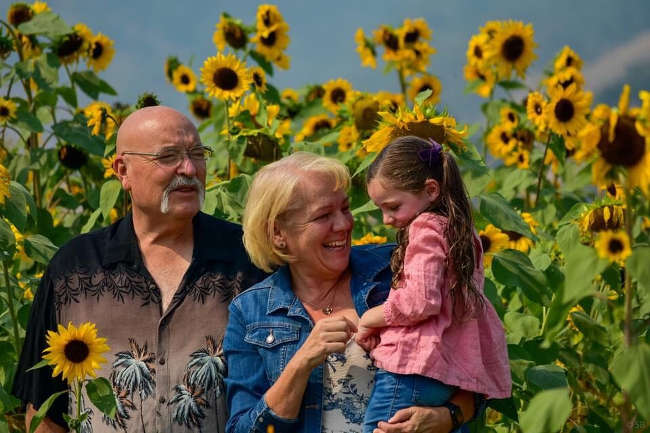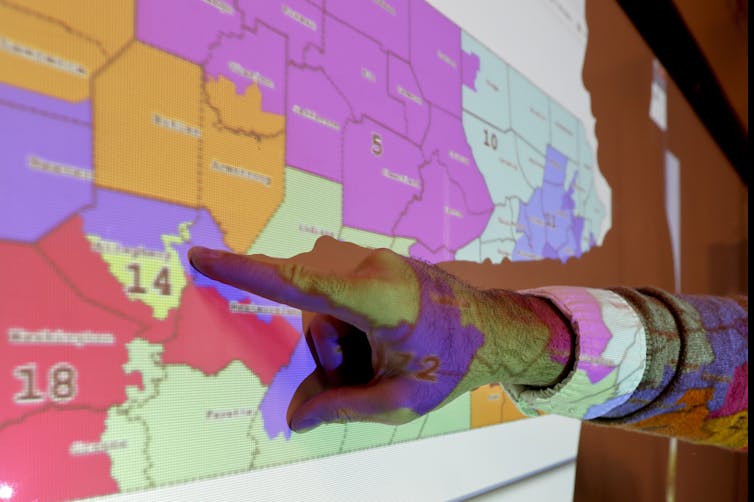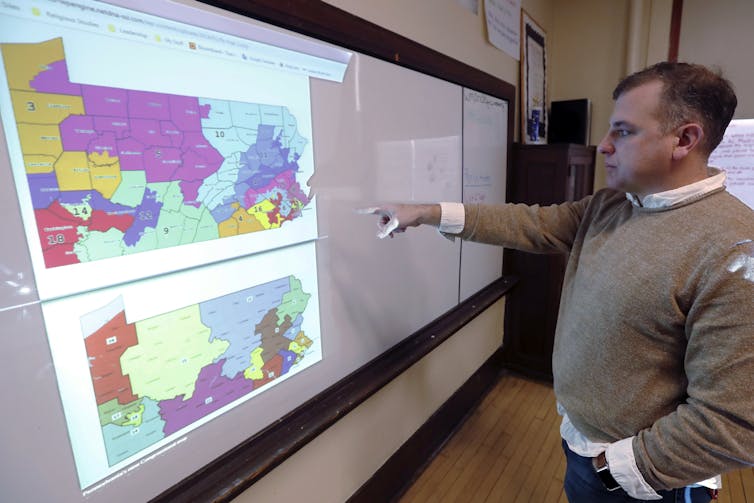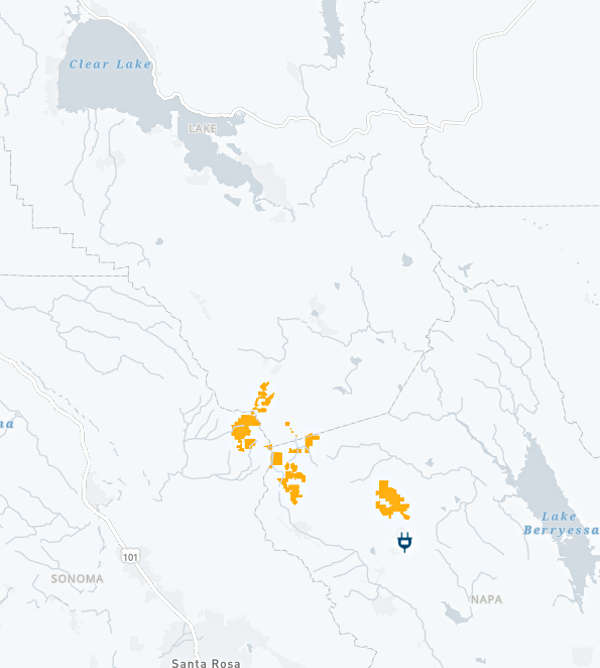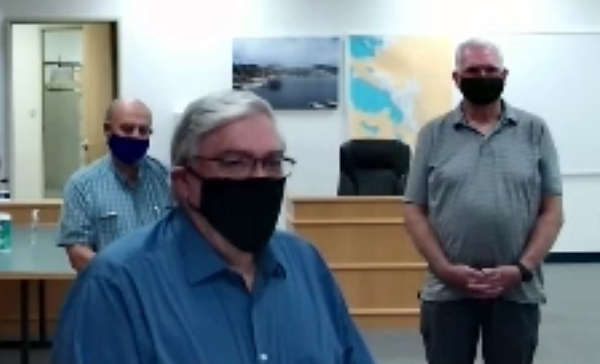
LAKE COUNTY, Calif. – The Board of Supervisors last week offered honors to a longtime county planning commissioner as he retires from his position.
Supervisor Bruno Sabatier presented a proclamation of commendation to Lake County Planning Commissioner Bob Malley at Clearlake City Hall on Tuesday morning, appearing via Zoom as part of the board’s meeting.
Joining Sabatier and Malley in the Clearlake City Council chambers were Mayor Russ Cremer and Sabatier’s predecessor on the board, retired District 2 Supervisor Jeff Smith.
Sabatier said Malley retired effective Sept. 24.
The Board of Supervisors voted to confirm Malley as Smith’s pick for the planning commission on Feb. 23, 2010.
In his time on the commission, Malley has considered key – and sometimes controversial – development projects around the county, including Dollar General’s various store proposals around Lake County, Valley Oaks and the Guenoc Valley Project in the south county, as well as cell towers and numerous cannabis projects.
The board commendation also credited him with helping to make decisions on important land use ordinances that will change Lake County’s future.
By the time he joined the commission, Malley already had a lengthy record of public service, from his time as a Lake County Sheriff’s deputy to serving on the Clearlake City Council, including holding the mayor’s job.
The proclamation credited Malley for bringing “intelligence, integrity, understanding, hard work, and a passion for community to the Planning Commission,” thus setting the bar for all other commissioners to meet.
Sabatier said Malley has done a lot for the city of Clearlake and the county as a whole. “He is part of Lake County.”
Smith said Malley has served the community in outstanding ways, including the sometimes thankless task of being a planning commissioner.
“I don’t know how to thank him enough,” other than to take him golfing, Smith said.
Smith told Malley, “You retired once, you need to retire again.”
Cremer said he’s known Malley going back to the time when he wore a badge.
“You’ve done a fantastic job in helping to make Lake County and the city of Clearlake a clearer and a safer place,” said Cremer.
He added in jest, “Did I mention that we have an opening on our planning commission?”
Supervisor Rob Brown said he was a teenager when he met Malley, then a sheriff’s deputy, known for treating people fairly.
Brown said Malley has been a great planning commissioner and wondered if in his retirement Malley will stop sending him text messages during the board meetings, suggesting how to vote on topics.
He also recognized Malley’s wife, Debi, for her support. “It’s a team effort on your part,” said Brown. “I appreciate both of you very much.”
Supervisor EJ Crandell served on the planning commission with Malley, and at Tuesday’s meeting recalled how Malley encouraged him to take on the vice chair job after his first year.
He said Malley may not have agreed with some projects, but he went by the book.
“We leaned on him a lot for his experience and he did a great job as a planning commissioner,” Crandell said.
“It’s been fun. It’s been a labor of love,” Malley said, adding, “This county has been very close to my heart.”
He said his parents moved him – kicking and screaming – to Lake County from San Francisco in 1966 when he was 16 years old. It wasn’t easy transitioning from his big high school in the city to the smaller school at Lower Lake.
He said his job with the Lake County Sheriff’s Office was the one he enjoyed the most, but he had to leave it early after being injured.
“We found other ways to help out,” he said, referring to his service on the Clearlake City Council and then the planning commission.
He said that as a commissioner he made his choices based on the laws laid out in front of him.
Malley thanked the board for the recognition. He said his wife retires on Oct. 1 – she works as Konocti Unified School District’s manager of student and family services – and they’re looking forward to camping trips in the near future and a cross-country trip next year.
“Bob is a shining example of what we’re always looking for in our community,” Sabatier said. “The best thing you could ever do for yourself and your community is to give back.”
Email Elizabeth Larson at

 How to resolve AdBlock issue?
How to resolve AdBlock issue? 
